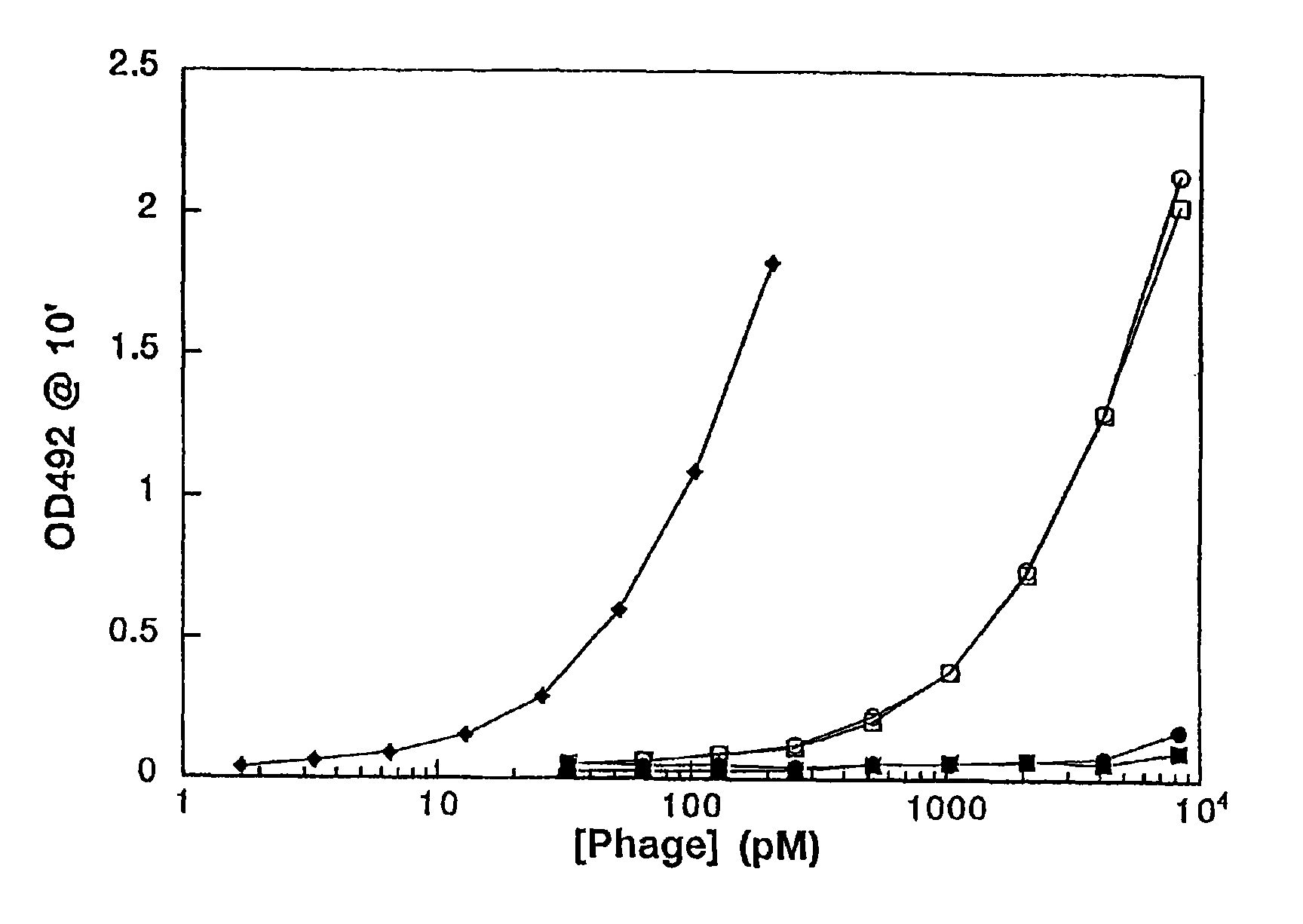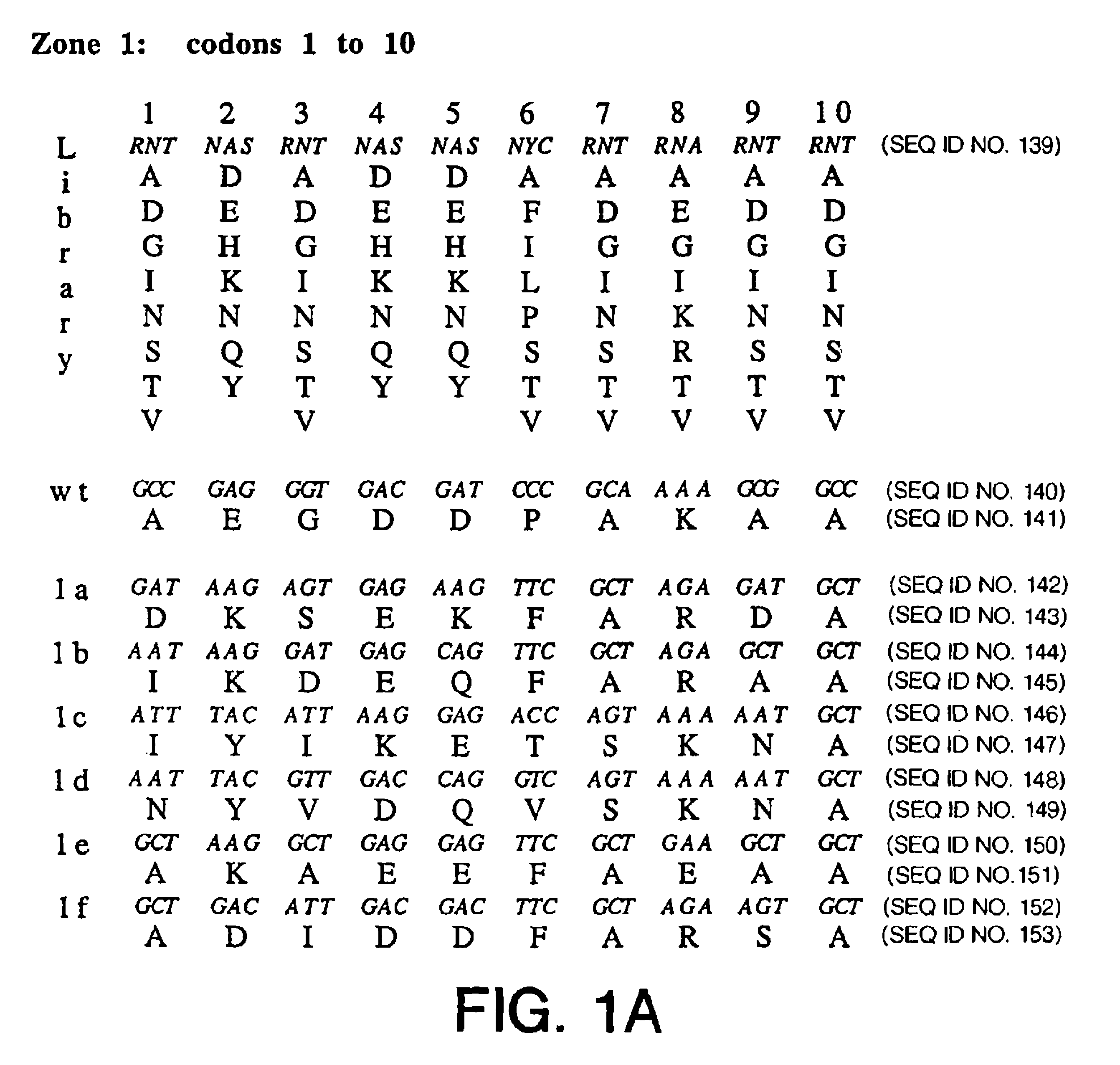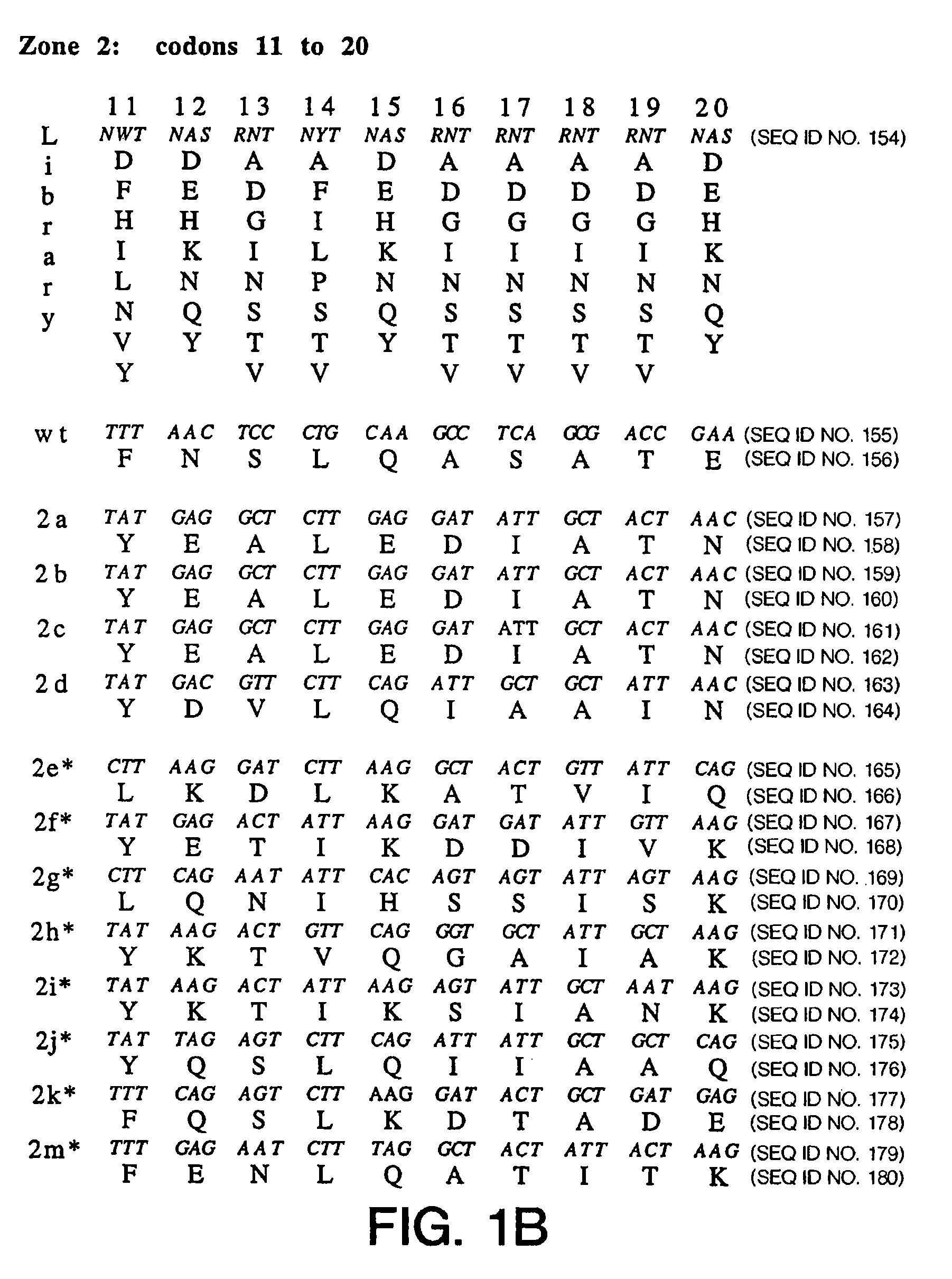Phage display
a technology of phage and coat protein, which is applied in the field of fusion proteins of polypeptides and coat proteins of viruses, can solve the problems of general deleterious effect on normal phage packaging and phage particle production, and achieve the effect of increasing the frequency of incorporation of fusion proteins and enhancing the stability of phage particles
- Summary
- Abstract
- Description
- Claims
- Application Information
AI Technical Summary
Benefits of technology
Problems solved by technology
Method used
Image
Examples
example 1
Construction of E. coli SS320
[0250]The new cell line SS320 was prepared by bacterial mating in which the F′ episome was transferred from XL1-BLUE cells to MC1061 cells according to known protocols (J. H. Miller, 1972, Experiments in Molecular Biology, p190). More specifically, the SS320 cells can be obtained using the following steps:[0251]Grow 1.0 mL cultures of MC1061 and XL1-BLUE in LB broth to OD600=0.5 (single colonies from freshly streaked plates. MC1061 was streaked on LB plates. XL1-BLUE was streaked on LB / tetracycline (10 μg / mL)).[0252]Mix 0.5 mL of each culture and grow 1 hour at 37° C. with slow shaking (50 rpm on a rotary shaker). After mating for 1 hour, agitate at 250 rpm to disrupt the mating.[0253]Plate dilutions on LB / tetracycline (10 μg / mL) / streptomycin(10 μg / mL).[0254]MC1061 carries a streptomycin resistance chromosomal marker while the F′ plasmid of XL1-BLUE confers tetracycline resistance. Thus, only the mating progeny (MC1061 harboring the XL1-BLUE F′ episome w...
example 2
Preparation of E. coli for Electroporation
[0268]Electroporation competent cells were prepared as described below:
[0269]1. Inoculate 1 mL 2×YT media (5 mg / mL tetracycline) with SS-320 from a fresh LB / tet plate. Grow about 6 hours and inoculate 50 mL 2xYT / tetracyline in a 500-mL flask; grow overnight.
[0270]2. Inoculate 6×900 mL Superbroth (5 mg / mL tetracycline) in 2-L baffled flasks with 5 mL from above culture and grow cells to OD600=0.6-0.8 at 37° C., 200 rpm.
[0271]3. Chill three flask on ice (shake periodically). Further steps were performed in a cold room, on ice, with prechilled solutions and equipment.
[0272]4. Centrifuge 5.5K / 5 min in a SORVALL GS3 ROTOR and decant all supernatant. Add culture from remaining three flasks to same tubes; respin and decant.
[0273]5. Resuspend in equal volume of 1 mM HEPES, pH7.4 by swirling or stirring. Centrifuge 5.5K / 10 min and decant supernatant.
[0274]6. Resuspend in equal volume of 1 mM HEPES as in (5) above. Centrifuge 5.5K / 10 min and decant su...
example 3
Mutagenesis Fill-in
[0276]The mutagenesis reaction was conducted using the procedure described in U.S. Pat. No. 5,750,373 with the changes shown below:
1) Kinase oligo
[0277]4 μL oligo (330 ng / mL stock; i.e., A260=10)
[0278]4 μL 10×TM buffer (0.5M tris pH7.5, 0.1M MgCl2)
[0279]4 μL 10 mM ATP
[0280]2 μL 100 mM DTT
[0281]24 μl H2O
[0282]2 μL kinase (NEB, 10 U / μL)
[0283]40 μL[0284]incubate at 37° C. for 0.5 hour.
2) Anneal oligo / template
[0285]40 μg kunkel template
[0286]1.2 μg kinased oligo (i.e. 40 μL from above kinase reaction; oligo / template=3)
[0287]25 μL 10×TM buffer
[0288]add H2O to 250 μL final volume[0289]incubate at 90° C. for 2 minutes, 50° C. for 3 minutes.
3) Fill-in[0290]add:
[0291]1 μL 100 mM ATP
[0292]10 μL 25 mM dNTPs (25 mM each dATP, dCTP, dGTP, dTTP)
[0293]15 μL 100 mM DTT
[0294]6 μL T4 ligase (NEB, 400 U / μL)
[0295]3 μL T7 polymerase (NEB, 10 U / μL)[0296]incubate at 20° C. for 3 hours.
PUM
| Property | Measurement | Unit |
|---|---|---|
| temperature | aaaaa | aaaaa |
| concentration | aaaaa | aaaaa |
| concentration | aaaaa | aaaaa |
Abstract
Description
Claims
Application Information
 Login to View More
Login to View More - R&D
- Intellectual Property
- Life Sciences
- Materials
- Tech Scout
- Unparalleled Data Quality
- Higher Quality Content
- 60% Fewer Hallucinations
Browse by: Latest US Patents, China's latest patents, Technical Efficacy Thesaurus, Application Domain, Technology Topic, Popular Technical Reports.
© 2025 PatSnap. All rights reserved.Legal|Privacy policy|Modern Slavery Act Transparency Statement|Sitemap|About US| Contact US: help@patsnap.com



